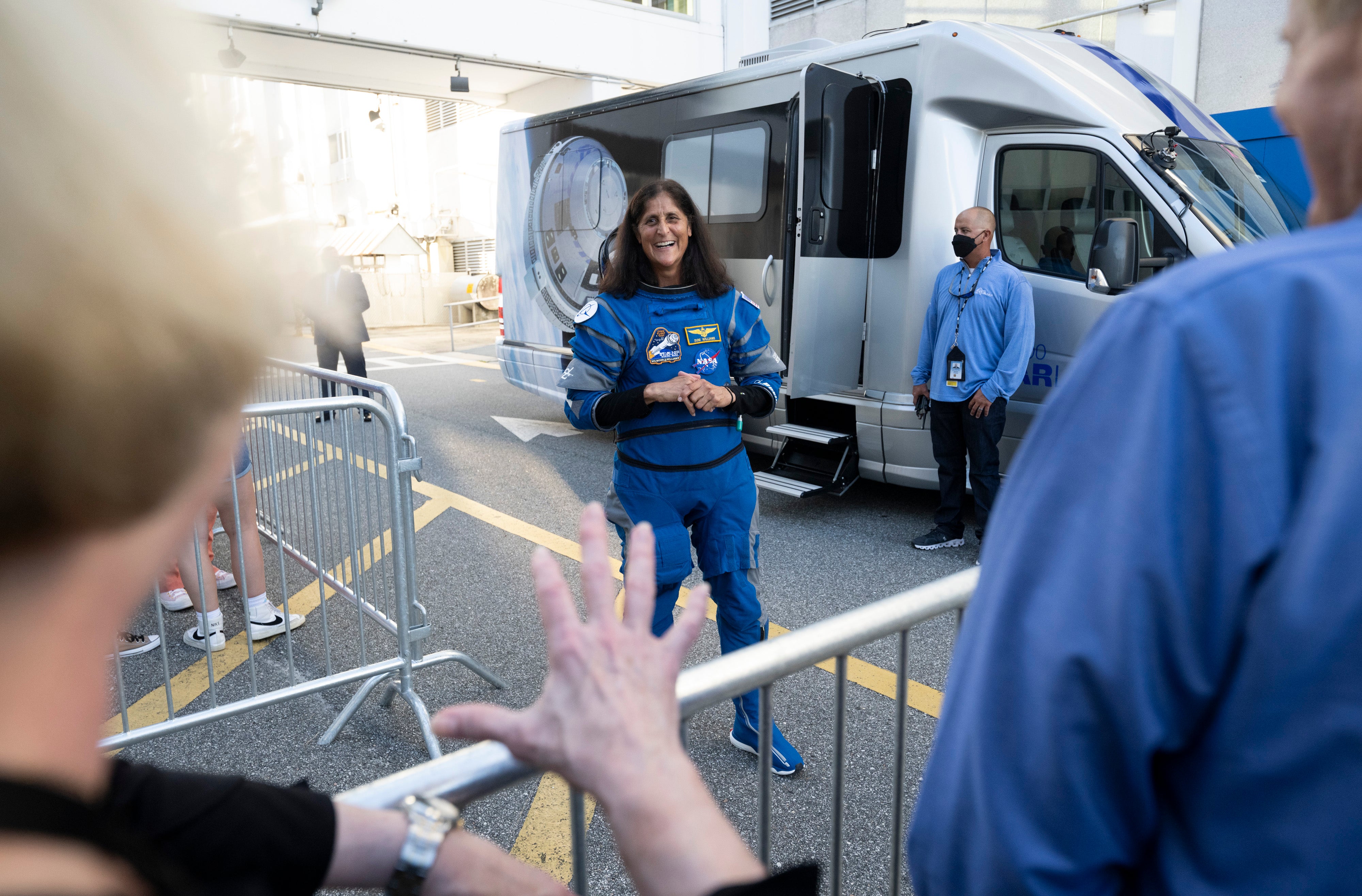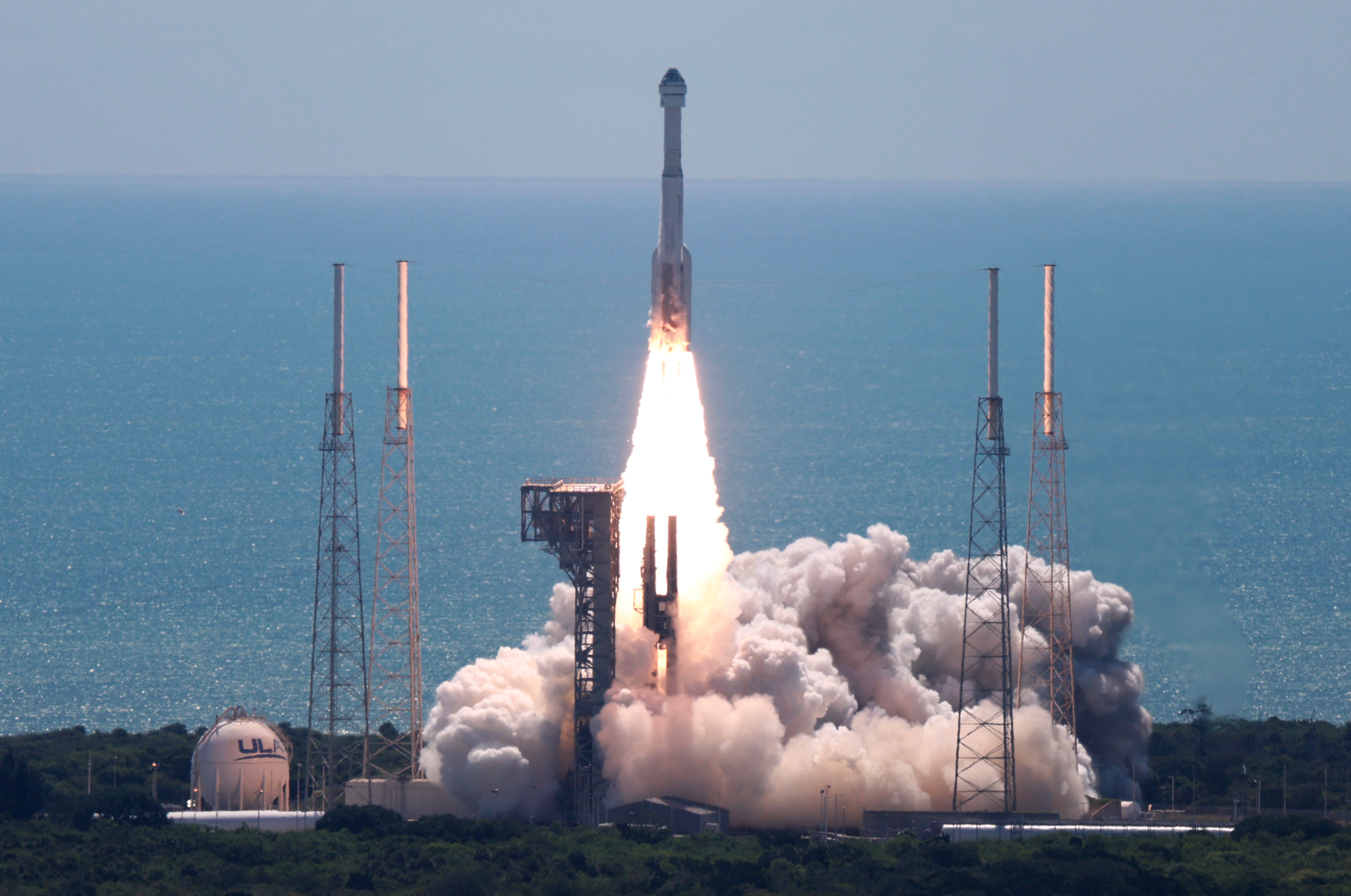Boeing Starliner: Troubled spacecraft finally takes off on Nasa mission to International Space Station
Previous two attempts had been postponed at the last minute because of technical issues
Boeing’s Starliner spacecraft has finally taken off from Florida, carrying Nasa astronauts to the International Space Station.
The astronaut-carrying capsule has faced a series of issues that has meant its launch has been repeatedly delayed. But Boeing will hope the launch will finally help it try and rival Elon Musk’s SpaceX in offering Nasa the ability to get its astronauts up to orbit.
The CST-100 Starliner, with two astronauts aboard, lifted off from the Cape Canaveral Space Force Station in Florida, strapped to an Atlas V rocket furnished and flown by the Boeing-Lockheed Martin joint venture United Launch Alliance (ULA).
The gumdrop-shaped capsule and its crew were headed for a rendezvous with the International Space Station (ISS), two years after the Starliner completed its first test voyage to the orbital laboratory without astronauts aboard. Docking maneuvers with crew will pose another test for Starliner, followed roughly a week later by the test of returning to Earth.
Boeing intends for Starliner to compete with SpaceX’s Crew Dragon capsule, which since 2020 has been NASA’s only vehicle for sending ISS crew members to orbit from U.S. soil.
Last-minute issues had nixed the Starliner‘s first two crewed launch attempts. A May 6 countdown was halted two hours before liftoff over three issues that required weeks of extra scrutiny. Another try last Saturday was halted less than four minutes before liftoff because of a glitch with a launchpad computer.

On Wednesday, the Atlas V’s engines thundered to life in flaming clouds of exhaust and coolant-water vapor as the spacecraft roared off its launch pad into the sky from Florida’s Atlantic Coast.
The single-engine Atlas V upper stage was expected to separate from the rocket’s lower section about four minutes into flight and carry the Starliner farther into space, where it was due to separate from the upper stage about 15 minutes later.
The inaugural crew for the seven-seat Starliner includes two veteran NASA astronauts: Barry “Butch” Wilmore, 61, a retired U.S. Navy captain and fighter pilot, and Sunita “Suni” Williams, 58, a former Navy helicopter test pilot with experience flying more than 30 different aircraft.
They have spent a combined 500 days in space over the course of two ISS missions each. Wilmore is the designated commander for the flight, with Williams in the pilot seat. They are due to spend about a week at the ISS before returning to Earth.
Boeing, with its commercial airplane operations rocked by a series of crises involving its 737 MAX jetliners, needs a win in space for its Starliner venture, already several years behind schedule and more than $1.5 billion over budget.
Starliner two years ago completed its first test voyage to ISS and back without astronauts aboard.
The longtime NASA contractor has built modules for the decades-old ISS and rockets designed to loft astronauts toward the moon. But Boeing never before built its own operational spacecraft, a feat complicated by years of software issues, technical glitches and management shakeups on the Starliner program.
Meanwhile, SpaceX’s Crew Dragon has become a dependable taxi to orbit for NASA. That capsule and Starliner are among the first in a new generation of privately built spacecraft - seeded with NASA funding - designed to fly astronauts to low-Earth orbit and the moon under the U.S. space agency’s Artemis program.
Starliner would compete head-to-head with SpaceX’s Crew Dragon capsule, which since 2020 has been NASA’s only vehicle for sending ISS crew members to orbit from U.S. soil.

If all goes as planned, the capsule will arrive at ISS after a flight of about 24 hours and dock with the orbiting research outpost some 250 miles (400 km) above Earth.
Although Starliner is designed to fly autonomously, the crew can assume control of the spacecraft if necessary. The test flight calls for Wilmore and Williams to practice maneuvering the vehicle manually en route to the space station, where it will remain docked for at least eight days before returning to Earth.
Wilmore and Williams are due to join ISS’s current seven resident crew members before riding the capsule back to Earth for a parachute and airbag-assisted landing in the U.S. Desert Southwest - a first for a crewed NASA mission.
Getting Starliner to this point has been a fraught process for Boeing under its $4.2 billion fixed-priced contract with NASA, which wants the redundancy of having two different U.S. rides to the ISS, an outpost expected to retire around 2030.
Meanwhile, SpaceX’s fourth test launch of its Starship rocket system, another chapter in its quest to build a reusable satellite launcher and moon lander, is due for liftoff on Thursday from Texas.
Additional reporting by agencies
Join our commenting forum
Join thought-provoking conversations, follow other Independent readers and see their replies
Comments
Bookmark popover
Removed from bookmarks